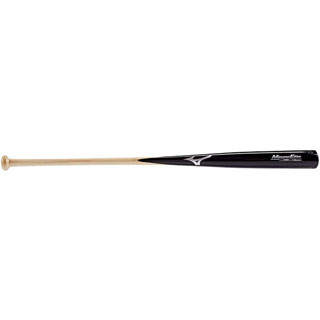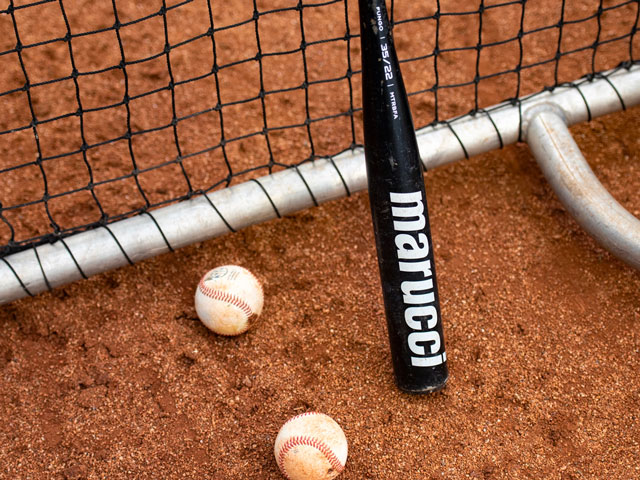What is a fungo bat and why should you use one?
A fungo bat is a modified bat that baseball coaches (and softball coaches) use to help conduct infield/outfield during practice and as a pre-game warm-up.
| Read: 3 min

One of the more interesting pieces of equipment in sports, a wood/metal fungo bat is an integral part of a baseball or softball coach's arsenal. The fungo bat looks, and behaves, like a regular bat, but it is only meant to be used as training equipment. What differs between standard bats and fungoes are the barrel, handle, knob, and weight of the bat itself.
To note: A wooden fungo bat or aluminum fungo bat should NOT be used in a game or against live BP.
What is the purpose of a fungo bat?
Invented in the late 1800s, fungo bats have become a popular way to practice the game of baseball. A fungo bat is typically used by coaches and/or players during fielding practice as the lighter weight allows hitters to repeatedly hit ground balls and fly balls across the field.
Beyond weight, a fungo bat is different than an average metal or wood baseball bat in shape. Fungo bats remain consistent in barrel diameter as they extend away from the handle Instead of the barrel widening as it approaches the end of the bat.
Coaches could use modified JUGS machines to dole out pop flies and ground balls to infielders and outfielders, but there is nothing that matches a ball naturally struck by a hitter for learning the game from a fielder's perspective.
Enter the fungo baseball bat.
What material is a fungo bat made of?
A fungo bat is typically made of wood or metal. Steel-belted fungo bats are most common and can come with a variety of lengths, from 24 to 32 inches long. The handle on these types of fungo bats will often be thinner than other styles for easy handling by players who prefer the feel. Further, the durability of a metal fungo bat is a bit higher than that of a wooden one.
Wood fungo bats are commonly made of ash (and northern ash), bamboo, birch, maple, and poplar. Poplar wood is good for fungoes as it is one of the lighter woods available.

Mizuno Elite Wood Maple/Poplar Composite Fungo Bat
Mizuno's been making these infield/outfield bats for years. You can trust it to rip a few past your sleeping 3B.
Buy on AmazonWhat is the best material for a fungo bat?
Depending on your budget, and your abject disgust for the metal "ping" sound of contact, a metal fungo bat is probably your best bet when it comes to buying the best fungo for your kid's little league squad. Durability, storage and weight should be top of mind at lower levels of competition.
Speaking of durability, companies such as Easton offer a warranty on their metal fungo bats.

Baseball vs Softball Fungo Bats. Is there a difference between the two?
The bat's barrel taper is one major difference between a baseball fungo and a softball fungo. Baseball fungo bats will have a taper that is wide near the handle and narrows down to only about an inch or so at the barrels. Softball fungos, on the other hand, do not vary much in width as they approach their barrel.
"I don't know if I've seen someone enjoy hitting fungoes more than Ron Washington" - Matt Antonelli
Are there any alternatives to using a fungo bat for fielding practice?
Regular baseball and softball bats have been used for coaches and players since the invention of the game. So don't feel as though you need to have a fungo bat to conduct practice. If anything, a wood fungo bat is just a luxury.
That said, Accubat makes a Fungo Racket for those looking to smack the ball all over the field with a minimum of effort. The Accubat Fungo Racket turns hitting grounders into a tennis match for the coach, which, in fairness, hitting isn't too far off from - especially when you consider the mechanics of a tennis backhand stroke.
Anyway, your mileage may vary with this overgrown pickleball paddle masquerading as a baseball productivity tool.
What companies make fungo & training bats?
- Bamboobat
- Demarini
- Easton
- Louisville Slugger
- Marucci
- Mizuno
- Rawlings
- SSK
Do companies make custom fungo bats?
Yes. Several companies offer custom bats with a variety of colors and engraving options.
Examples of fungo bats
- Easton MLF5 Maple Fungo
- Louisville Slugger Flylite
- Marucci CS2 Maple Wood Fungo
- Mizuno Elite Fungo Bat
- Rawlings Northern Ash Wood Fungo Bat
Should you use batting gloves when hitting fungoes?
Every coach should find their own comfort zone when it comes to hitting infield-outfield sessions for their team. With that said, you don't need to wear batting gloves when using a fungo bat - whether that is a maple fungo, an aluminum fungo, or composite fungo bats. Dusty Baker might wear batting gloves, but he's a pro coach and you're (probably?) not.
Also, don't forget to wash your batting gloves after you've used them a few times.